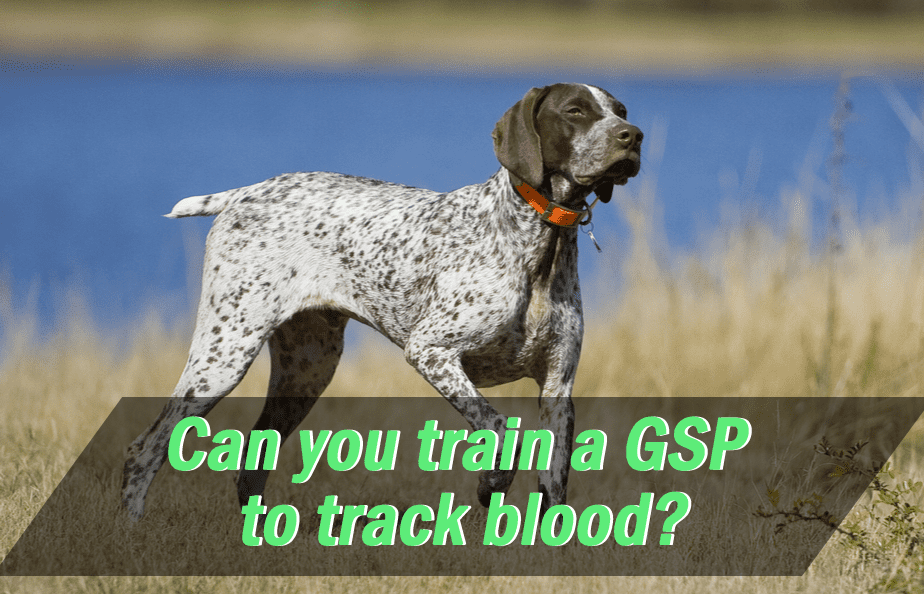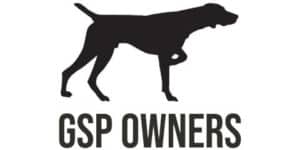Since dogs have the most sensitive nose of all creatures, why not take advantage of them? Their noses can be used to track animals and blood. Some dogs need to be trained, while others are born with hunting skills. Once a dog is trained on what to do when catching a scent, it will hunt for it.
Here are a few questions we will discuss in this article:
- How do you train a dog to track blood?
- Can any dog train a dog to track blood?
- How do you train a German shorthaired pointer to track deer?
- Do dogs track blood?
The answer is yes, a GSP can be trained to track blood. Training can begin as early as 10 weeks of age. Most dogs respond well to training when they are six to nine months old. Also, it’s vital to make sure your dog is familiar with the equipment.

How do you train a dog to track blood?
Tired of tracking a wounded deer for hours with zero rates of success? Losing a deer is very frustrating. Luckily, dogs who have the most sensitive nose can help track blood. Blood-tracking dogs can save the deer season.
Humans usually tend to lose track of the deer; your dog can scent the deer and help you hunt down. Breeds like GSP, and hounds, are great at hunting deer and other animals in the wild, including birds like ducks.
All you need is a gear to train a dog to track blood. Some of the essential gear are:
- Deer Blood: Deer blood helps create the trail. Dip the paracord rope into the blood and take it with you to leave the scent. A squirt bottle with blood will also work to guide the dog’s nose on the right track.
- Deer Liver: The deer liver acts as a reward at the trail’s end. Some dogs prefer liver, while some prefer meat.
- GPS App: Apps are helpful for long trails to know where you were while making the scent trail. You can also use a flag to mark the trail.
- Lead: If you don’t require a lead, you can invest in a prong collar and get a collar with GPS tracking to know where the dog is.
- Flashlight: Using a flashlight at night is a good practice for your dog, and it gives a real-time scenario.
- Paracord Rope
Can any dog train a dog to track blood?
Dogs possess a great sense of smell which allows them to smell things from far away and things that are not even visible to us. It is so great that they can sense the fear and anxiety in humans.
They are so sensitive to smell that they can track blood and odors for many different purposes. They are used for tracking a person, drugs, bodies, hunting, etc.
Dogs are not trained to track; it comes naturally. When they are trained, they learn to identify certain odors and how to discriminate against them.
Every dog has a great sense of smell, but not everyone is equal; some dogs have a greater sense of smell than others. Even with their amazing olfactory ability, not every dog breed is used for tracking. Some dogs can only trail smell up to 24 hours or less, which we are not looking for.
Dogs like a bloodhound, German shepherd, Basset hound, and beagle are known to have amazing abilities in the field of tracking. Dogs like bloodhounds are known to trail old smells, and hence they are known to be on top when it comes to tracking.
How do you train a German shorthaired pointer to track deer?
Deer hunters take the help of dogs to track deer, and they use them to track a wounded deer that has run away or make the dog chase the deer. Either way, it’s necessary to give them practical training to track the deer successfully.
Most hunters use German shorthaired pointers to track deer. Dogs have 300 million smell receptors, while humans have only 5 million. The right training and motivation can help track the deer in just a day. Not every dog loves to track, but if you see that your dog is interested in tracking, you should track him to track deer before next season.
Step 1
Choose a purebred hound. Beagles, Walkers, Dachshunds, and Setters often make good deer dogs because of their inherent physical traits. Three to six months old is the best time to train them.
Step 2
To hunt the deer, your dog will need a nutritional diet. Take consultation from the resource section and feed the dog accordingly.
Step 3
Make your dog get used to deer scent. If you plan on tracking a running deer, use deer legs to make them get used to the deer scent. If you plan on tracking wounded deer, scatter some blood on the ground.
Step 4
Scatter or hide the blood at the end of the trail. Place the dog at the starting trail and make them smell where it is.
Step 5
Take your dog along with you when you look for areas populated with deer. When you see a deer, take the dog out immediately near the deer to pick up their scent.
Do dogs track blood?
Yes, dogs can track blood if they are trained. They are called the “blood trackers.” With training, they learn to distinguish a wounded animal by its scent. Tracking dogs are usually used to track deer, and they are also very effective for recovering mule deer, moose, bear, and exotics.
Conclusion
Hunters use different ways to train dogs to track deer. This tracking system has grown, and today, more hunters are training their dogs. These days there is a growing number of trainers in each state to help train the dog and help in tracking. The trainer’s price varies among various states.
However, if you are a deer hunter, it’s best to train your dog yourself early and get a GSP next deer season. A well-trained dog will solve your problem!

